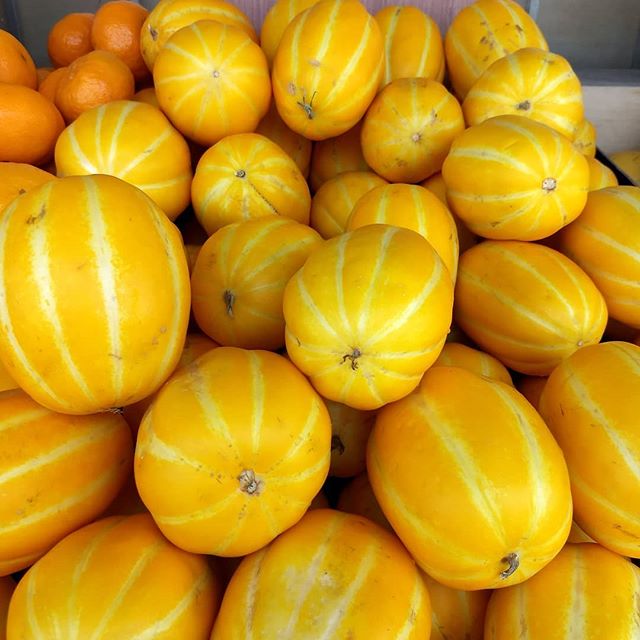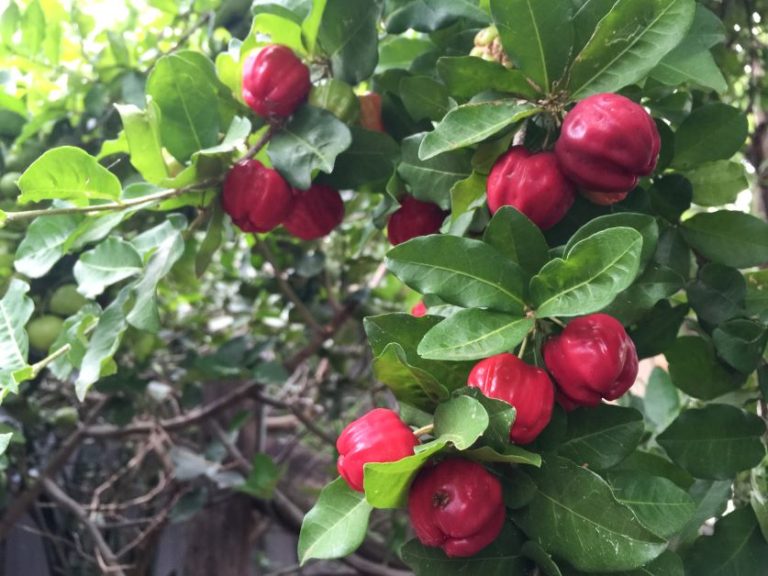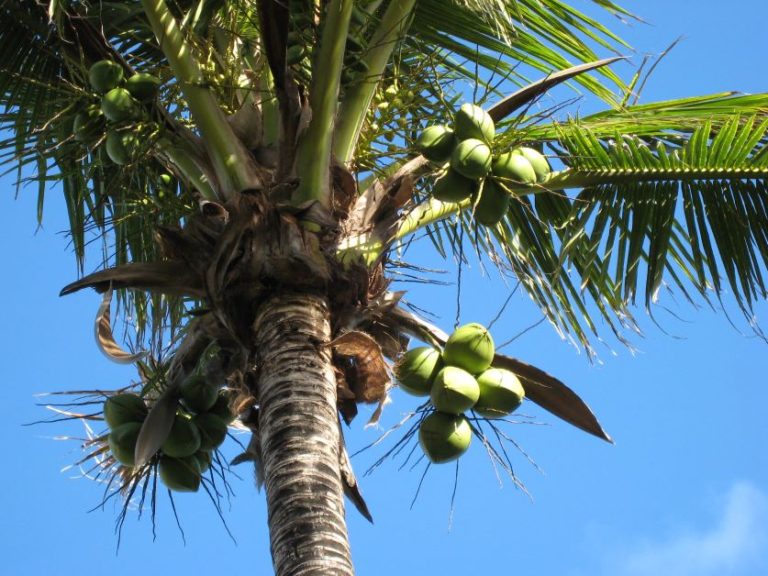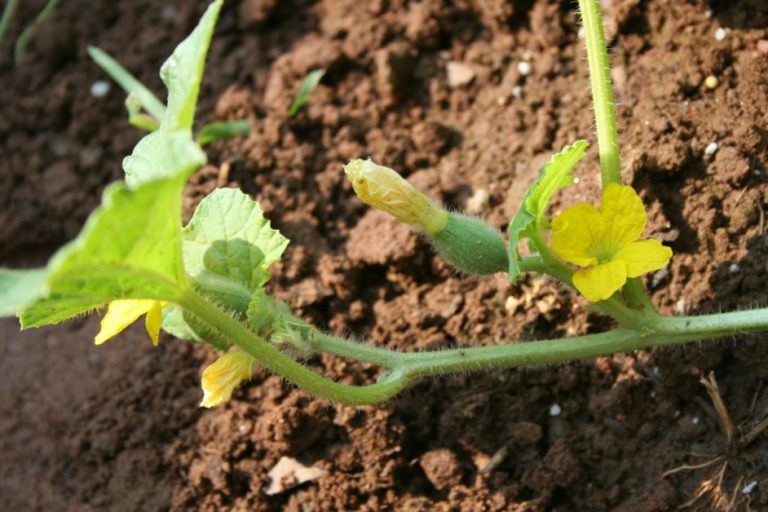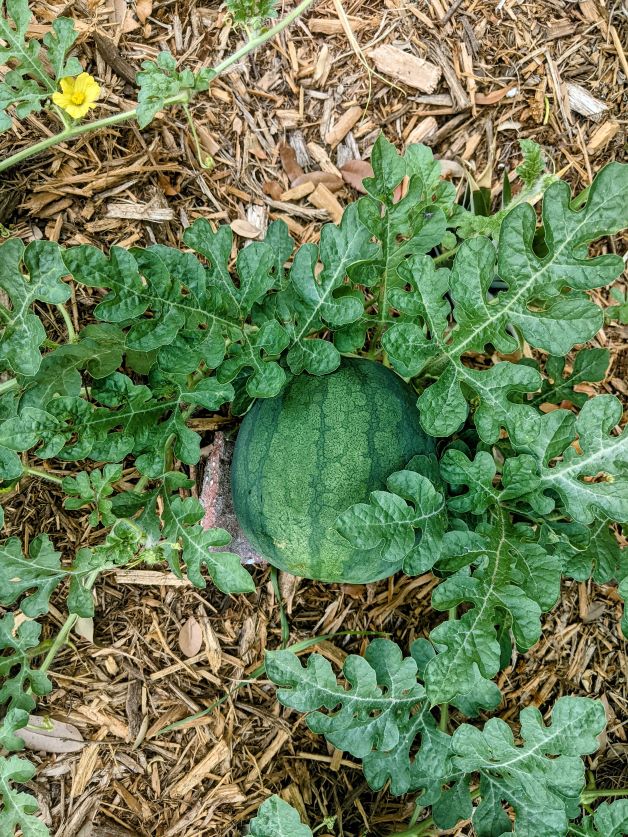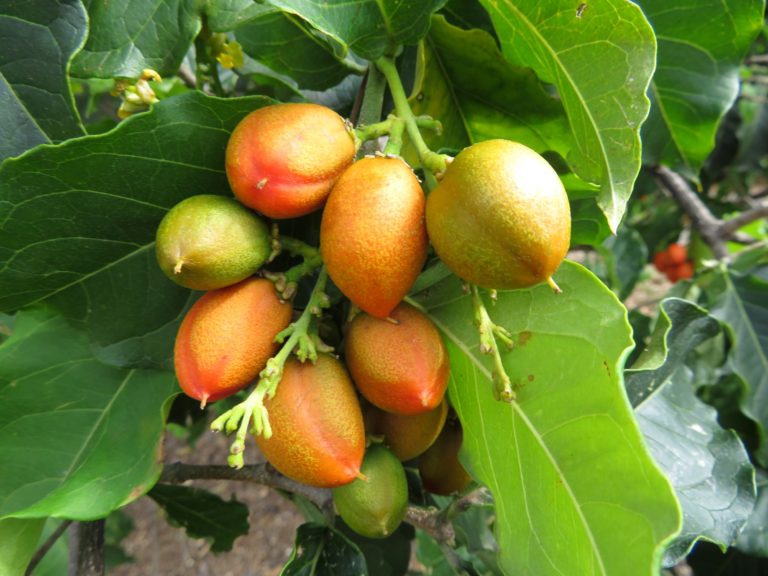How to Grow Chamoe (Korean Melon)
One of the secrets to a successful Florida garden is to grow exotic varieties that do well in other subtropical parts of the world. One of these varieties is chamoe, or Korean melon.
Chamoe needs a long, warm weather growing season, making it a great melon variety for Florida. Learn how to grow chamoe in this comprehensive guide.
What is chamoe
Chamoe (Cucumis melo Makuwa Group) is a type of melon that’s popular in Asia. It has several names, including:
- Korean melon
- Oriental melon
- Sun jewel
- Japanese cantaloupe
- Golden melon
- Euncheon-chamoe (Korea)
- Chameh (Korea)
- Ginsen makuwa (Japan)
- Xian hua (China)
- Huangjingua (China)
- Tian gua (China)
Chamoe is a small, yellow melon. When mature, it can fit in the palm of your hand. Chamoe is crunchier than a traditional melon. It’s also not as sweet – some people say that chamoe tastes a little like a mix of cucumber, honeydew, and pear. Unlike cantaloupe, all parts of chamoe fruit are edible (skin and seeds included).
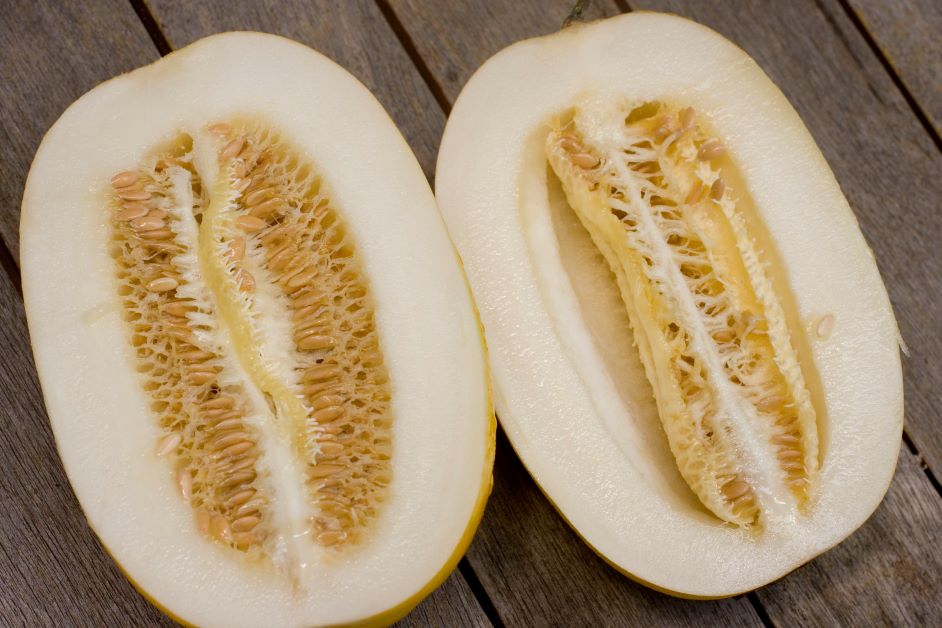
When to plant chamoe
Chamoe needs 55 days (or more) of consistently warm weather to set fruit. If you live in a cold weather climate, start your chamoe seeds indoors about a month before the last frost. Before transplanting them outside, wait until all danger of frost has passed and your soil is relatively warm. Usually, this will occur mid-spring but check your specific zone and melon planting schedule to be sure.
When to plant chamoe in Florida
Because of our almost constantly warm weather, we’re lucky to have 2 melon planting seasons in Florida.
[table id=24 /]
How to grow chamoe
Fill seed starter cups with equal parts potting soil, aged manure, and perlite. Some people use peat moss instead of perlite, but I avoid peat because of its negative environmental impact.
Plant 1 or 2 chamoe seeds per cup, burying them about ½ inch deep.
Water your seeds and keep the soil moist but not soggy.
Keep your seeds in a warm, sunny location at a temperature between 76°F to 80°F.
Chamoe seeds germinate within 3 to 10 days – the cooler the temperatures, the longer germination will take. Chamoe seedlings are usually ready for transplanting after about a month. Wait until your seedlings have 2 true leaves before transplanting, but don’t wait too much longer than that. Chamoe has a delicate root system that doesn’t take well to transplanting when they reach a certain maturity.
When transplanting, gently remove your seedlings from their starter cups, taking care to avoid disturbing their roots. Choose the healthiest seedlings to keep and cull the weakest. Immediately water your chamoe after transplanting and keep the soil moist but not soggy until established.
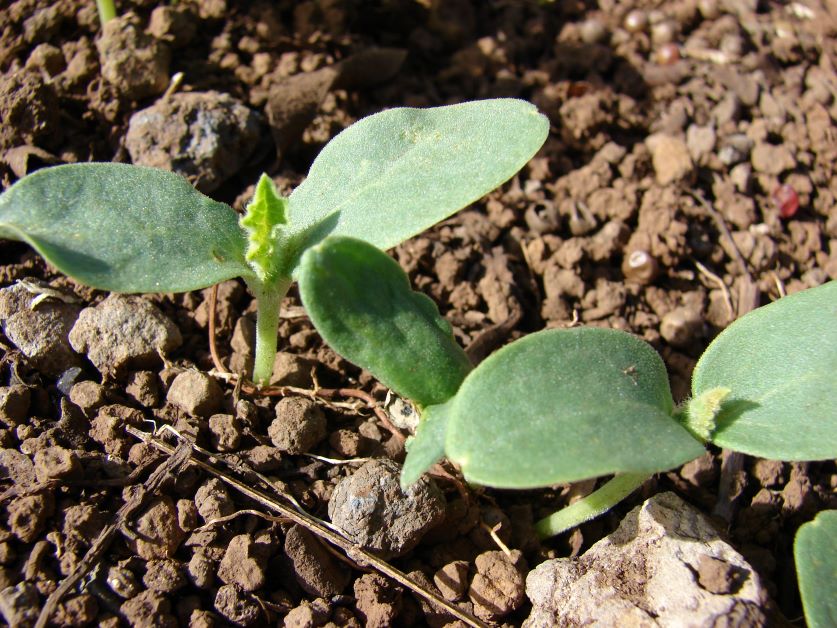
Chamoe growing conditions
Light
Chamoe is a full sun plant, so make sure it gets 6 to 8 hours of light a day.
Temperature
Chamoe needs a long season of warm days and warm nights to grow. They will suffer if the temperature dips below 60°F, and they can tolerate highs of up to 84°F. Time your planting strategically because chamoe needs at least 60 days of these warm temperatures to set fruit and ripen.
Soil
Chamoe isn’t too picky about its soil as long as it’s warm, fertile, and well-draining. The ideal soil pH for chamoe is 6.0 to 6.5. If your soil is sandy and nutrient-deficient (which is often the case in Florida), amend it with oak leaf compost 2 weeks before planting.
Water
Watering your chamoe melon isn’t hard, but it does take a little know-how. To get the most flavorful melon, you need to let up on the amount of water you give your chamoe plant towards the end of its growing season. Giving your melon too much water in the 2 weeks before harvesting leads to watery, bland fruit.
Until your chamoe is established, keep the soil moist but not soggy. Once established, give it 1 to 2 inches of water per week. Always do the touch test before watering your chamoe – stick your finger down into the soil and if it’s dry up to your second knuckle, it’s time for more water.
About 2 weeks before your chamoe is ready to harvest, reduce the amount of water you give your plant. Water it twice a week, giving it only enough to keep the plant alive. Don’t be alarmed if your plant starts dropping leaves, this is normal. Giving your chamoe less water during the final stage of the growing process will make your melon sweeter and more flavorful.
Spacing
Plant your chamoe at least 2 feet apart in rows that are 6 feet apart.
Fertilizer
Once your chamoe starts to send out vines, feed it an organic bone meal once a month per the instructions on the package. If you decide to use organic synthetic fertilizer, choose one with low nitrogen content. Too much nitrogen will make your melon grow many leaves but less fruit.
Pruning
When you grow melons in a warm weather climate, fungal disease is inevitable. Do your best to remove heavily diseased leaves as your plant grows. You can also remove excess foliage to improve airflow, which will also help cut back on disease.
How to grow chamoe on a trellis
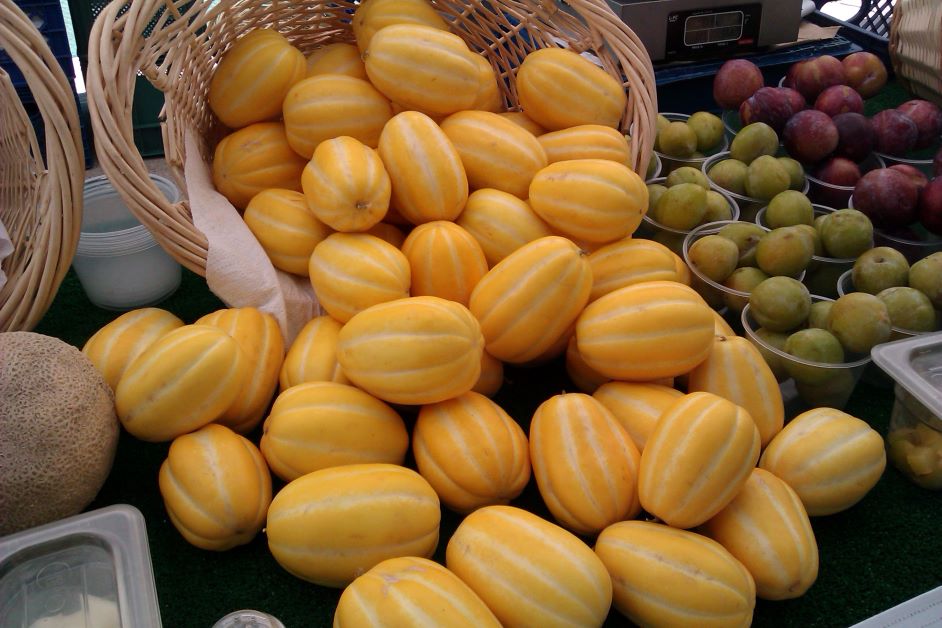
Chamoe is a vigorous climber and the best way to keep it healthy is to grow it on a trellis. Growing chamoe vertically helps keep your fruit off the ground and away from pests. Trellising chamoe also improves airflow between the leaves, which helps reduce fungal disease.
There are a few options when choosing a melon trellis. My favorite ways to grow melon vertically are on a DIY garden fence or using an A-frame trellis. I wrote a step-by-step guide on how to grow kabocha squash on a DIY garden fence, and those same instructions apply to growing chamoe. Check it out for more information.
Some types of fruit need to be supported with a sling when they’re grown vertically, otherwise, the weight of the fruit will put too much pressure on the vine. This isn’t the case with chamoe melons because they’re so small. The vines are strong enough on their own to hold the weight of the melons to your trellis.
Can you grow chamoe in a container?
Yes, you can grow chamoe in a container. Do be aware, though, that your chamoe plant will still need lots of room to ramble. Be sure to put your pot next to a trellis so your chamoe has something to climb.
A well-draining 3-gallon plant pot filled with equal parts potting mix, aged manure, and perlite works best when growing chamoe in a container. A DIY garden container is also a good choice.
It’s easy to both overwater and underwater a container-grown chamoe. Always let your plant dry out between waterings, but don’t let it get too dry, either.
When to harvest chamoe
Depending on the variety you’re growing, chamoe can take 70 to 90 days to go from seed to harvest. Once your flowers are pollinated, you can expect to harvest in another 40 days. Give your Korean melons a slight tug and if they easily pull off the vine, they are ready to pick. Another sign of ripeness is a sweet, fragrant smell.
Chamoe pests
Squash bugs
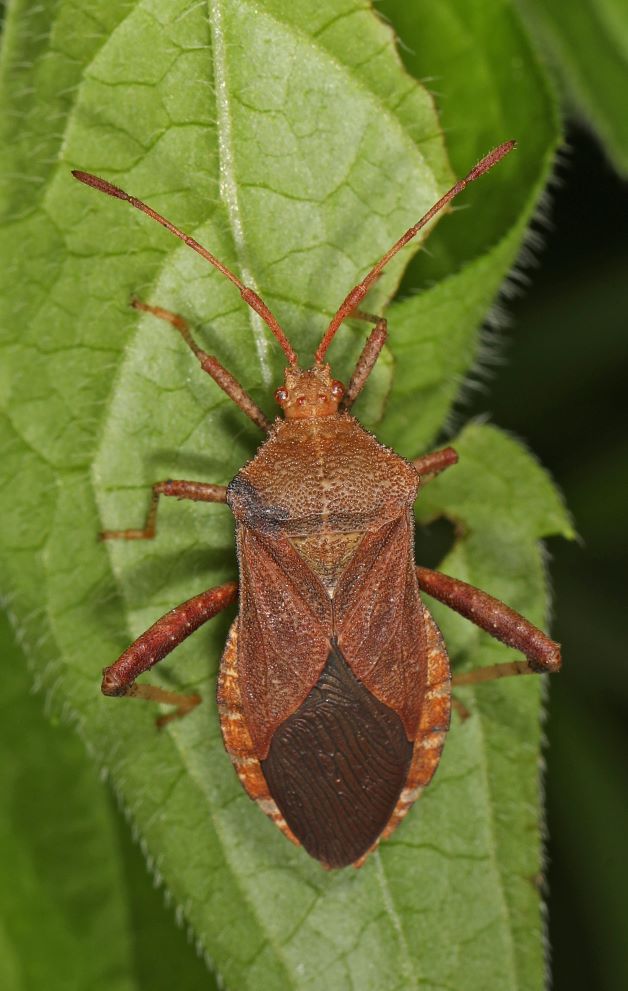
Squash bugs use their mouths to suck nutrients from the leaves and stems of your plants. Although they are immune to pesticides, you can kill squash bugs without chemicals by picking them off by hand.
Aphids
Like squash bugs, aphids also suck nutrients out of your plants. Aphids can be annoying and multiply very quickly. You can keep them in check, however, by inspecting your plants regularly. Check under leaves and use your hose to blast any aphids that you find. Aphids are soft-bodied insects and a quick spray of water is enough to crush them.
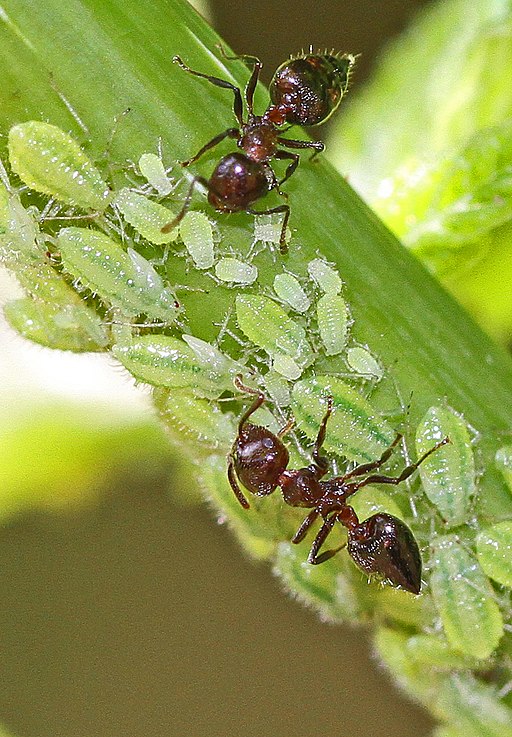
Ants
If you have aphids, then you also probably have ants. This is because ants and aphids have a symbiotic relationship. Aphids excrete a sticky, sweet substance called honeydew, which ants then use as a food source. To get a hefty harvest of honeydew, ants will carry aphids up to the leaves of your plant where they can feed. If you want to get rid of aphids, you need to get rid of ants, as well.
Cucumber worms
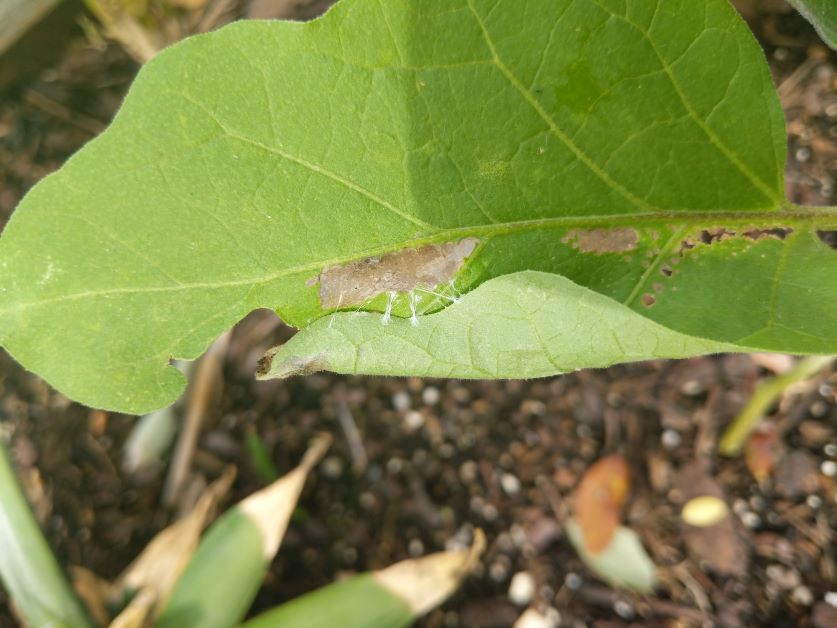
Cucumber worms will bore holes through your melons, making them inedible.. Cucumber worms use webbing to fold themselves up in your leaves. Check your plants every other day (or every day, if you can), and pick them off by hand. If the infestation is bad enough, spray organic Monterey B.t. If you do spray B.t., make sure to keep it away from passionflower and milkweed. B.t. is good for getting rid of cucumber worms, but it also targets caterpillars, including the monarch.

Chamoe diseases
Powdery Mildew
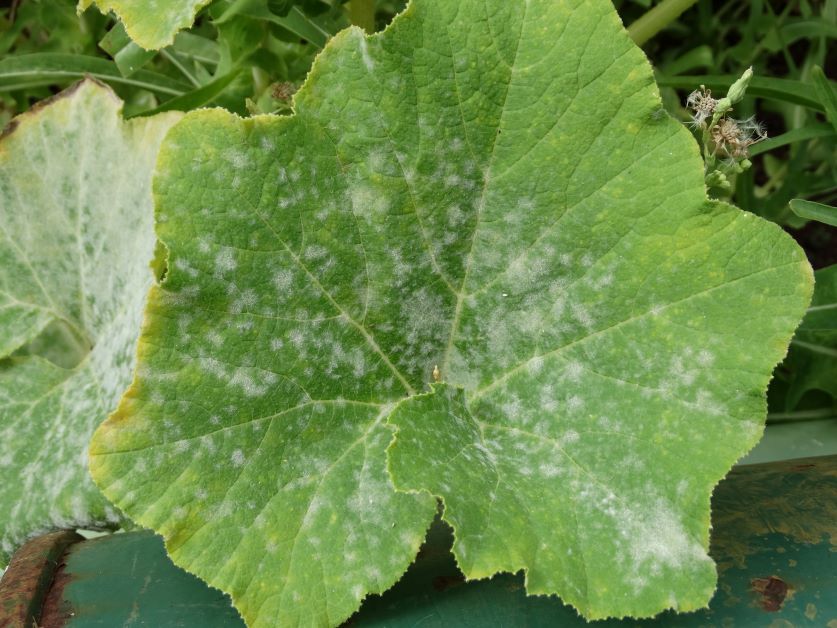
Like most melons in Florida, chamoe is susceptible to fungal diseases like powdery mildew. Because of our hot, humid, and rainy weather, there’s really no way to completely stop powdery mildew, but there are ways to stave it off for as long as possible:
- Don’t water your plant from overhead. Instead, use a water wand to water your plant at the base.
- Prune off excess foliage to improve airflow.
- Make sure your plant gets enough sun.
- Water your garden in the morning instead of at night. This will also help cut down on slugs.
- Spray your melon plants once or twice early in the season with organic copper fungicide. Please note that copper fungicide does a better job of preventing powdery mildew than it does treating it.
- Space your plants appropriately.
- Grow your melons on a trellis.
Featured image photo credit: LexnGer

